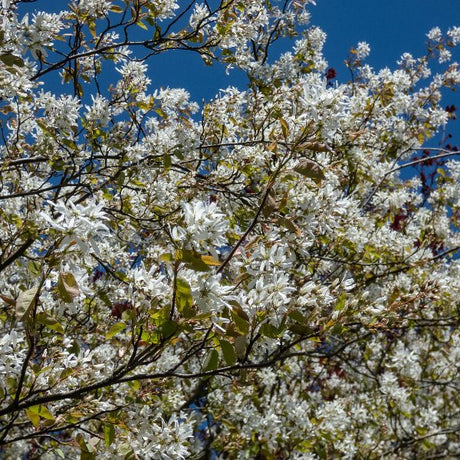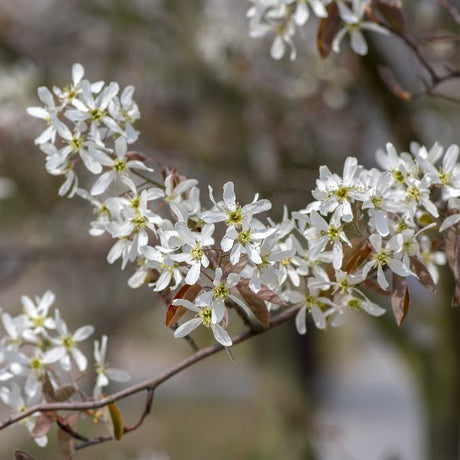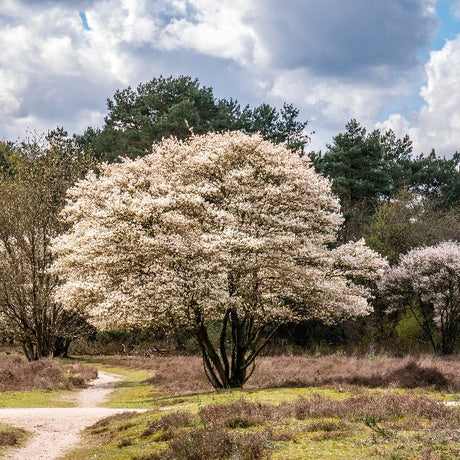FAQS for Buying Serviceberry Bushes Online
What makes Serviceberry shrubs a good choice for edible landscaping?
What makes Serviceberry shrubs a good choice for edible landscaping?
Serviceberry shrubs (Amelanchier) are excellent for edible landscaping because they produce delicious, blueberry-sized fruits with a mild apple-pear flavor. Rich in antioxidants, manganese, iron, and potassium, the berries can be used in jams, syrups, and baked goods—making them both ornamental and practical.
Do Serviceberry shrubs attract wildlife to the garden?
Do Serviceberry shrubs attract wildlife to the garden?
Yes, Serviceberry shrubs are highly attractive to pollinators and songbirds. In spring, their white flowers provide nectar for bees and butterflies, while the juicy purple-red berries that follow are a favorite food source for birds and other wildlife, enhancing biodiversity in your landscape.
Which Serviceberry varieties offer the best fall color and flowers?
Which Serviceberry varieties offer the best fall color and flowers?
Popular varieties like ‘Autumn Brilliance’ and ‘Cole’s Select’ are prized for their vibrant fall foliage and abundant spring blooms. ‘Lustre®’ and ‘Cumulus’ Serviceberries provide show-stopping white flower displays, while the ‘Standing Ovation’ offers a columnar form perfect for tight spaces or modern gardens.
Can Serviceberry shrubs be grown in containers or small gardens?
Can Serviceberry shrubs be grown in containers or small gardens?
Yes, compact varieties like ‘Regent Saskatoon’ and ‘Standing Ovation’ Serviceberries are ideal for containers or small spaces. These dwarf or columnar selections offer the same year-round beauty—flowers, fruit, and fall color—without requiring a large footprint.
How do I care for a Serviceberry shrub to ensure healthy growth and fruiting?
How do I care for a Serviceberry shrub to ensure healthy growth and fruiting?
Plant Serviceberry shrubs in full sun for best fruit production, using well-drained soil and moderate watering. Add Nature Hills Root Booster at planting for optimal root development. Prune in late winter or early spring, and provide a light mulch layer to retain moisture and suppress weeds.




 Need a shrub that has it all? Introducing the Serviceberry bush (Amelanchier)!
Need a shrub that has it all? Introducing the Serviceberry bush (Amelanchier)! The biggest flowering displays include the
The biggest flowering displays include the 